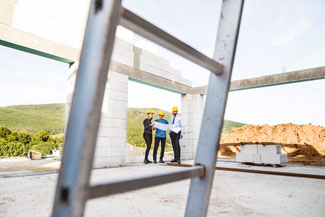Greenfield engineering or greenfield construction is the process of developing a new building or structure over a piece of land that has never been developed. There are many advantages of developing over greenfield but not so much when you are talking about Brownfields. Brownfield engineering is related to developing or building over a property that was previously developed and requires additional steps and planning.
Greenfield Engineering
Greenfield areas are normally undeveloped areas highly recommended for new construction. The benefits of greenfield construction relate to pristine pieces of land with little to no contamination that contain no structures in the premises. The most beneficial advantage is that there is no cost related to environmental remediation and is ready to start building right away.
The most important drawback is that greenfield are usually located outside city centres that might require additional infrastructure upgrades but those are offset by more accessible land costs. Another advantage is that they offer larger pieces of real estate ideally for future expansion and their zoning classification is easier to be changed or adjusted as required. Keep in mind that greenfield usually require deforestation and could affect environmental sensitive areas including the habitat of endangered species.
Greenfield construction advantages:
- Ample space to build
- Better planning due to open land access
- Less unknown
- No contamination
- Sizing of property is not an issue
- Low property cost
- Future expansion possibilities
- Flexibility to use larger equipment
- Road posting might affect deliveries and schedule
However, some of the drawbacks are:
- No accommodations for crews, per-diem might be required
- Additional infrastructure costs
- Limited local suppliers
- Deforestation and environmental permits could take longer due to impact to sensitive areas
- Additional costs due to location, and temporary offices (power, facilities and warehouse space)
Brownfield construction
While greenfield is an undeveloped land, brownfield construction is related to pieces of land that have been previously developed and might be contaminated. Since brownfield properties are environmentally challenged, additional remediation costs mandated by EPA and other agencies will affect the total construction cost and the project budget. The main advantage is location and easier access to the property including existing infrastructure in the area.
The EPA (Environmental Protection Agency) established a Brownfields Program in 1995 and is the guideline to develop rebuilding plan. Some cities offer tax benefits by redeveloping existing/abandoned sites as part of their city revitalization plan. These pieces of land are higher in cost because of location and can present development challenges due to zoning requirements and location.
The main advantages of brownfield construction are:
- Existing infrastructure in the area
- Accessibility for deliveries and workers
- Some cities might offer tax incentives
- Might qualify for additional LEED points
- Historical data such as Geotech and plats might be available
- EPA grants are available for future development
- Job training grants available through EPA program
- Job creation in city centres
- Can increase property value to nearby properties
The main disadvantages of brownfield construction are:
- Limited parking space for crews
- Hazardous material on site and in soil
- Demolition activities might increase development costs
- Zoning and permitting requirements might be the limiting factor
- Finding the right land with the required sizing requirement might be difficult
- Limited storage space for material
As you can see there are multiple factors to consider when deciding which option to follow. Ultimately the decision will be based on economic and special location requirements that could not be in your hands but being informed is good to make the case for your recommended location. Always consult with your local state and federal agency on additional permits, requirements and costs associated to developing in brownfield and greenfield sites.
As construction professionals, what are your thoughts on these two types of construction sites? Leave your comment below.
EDITOR’S NOTE: This post was originally published November 2014 but has been updated and revamped for accuracy.


